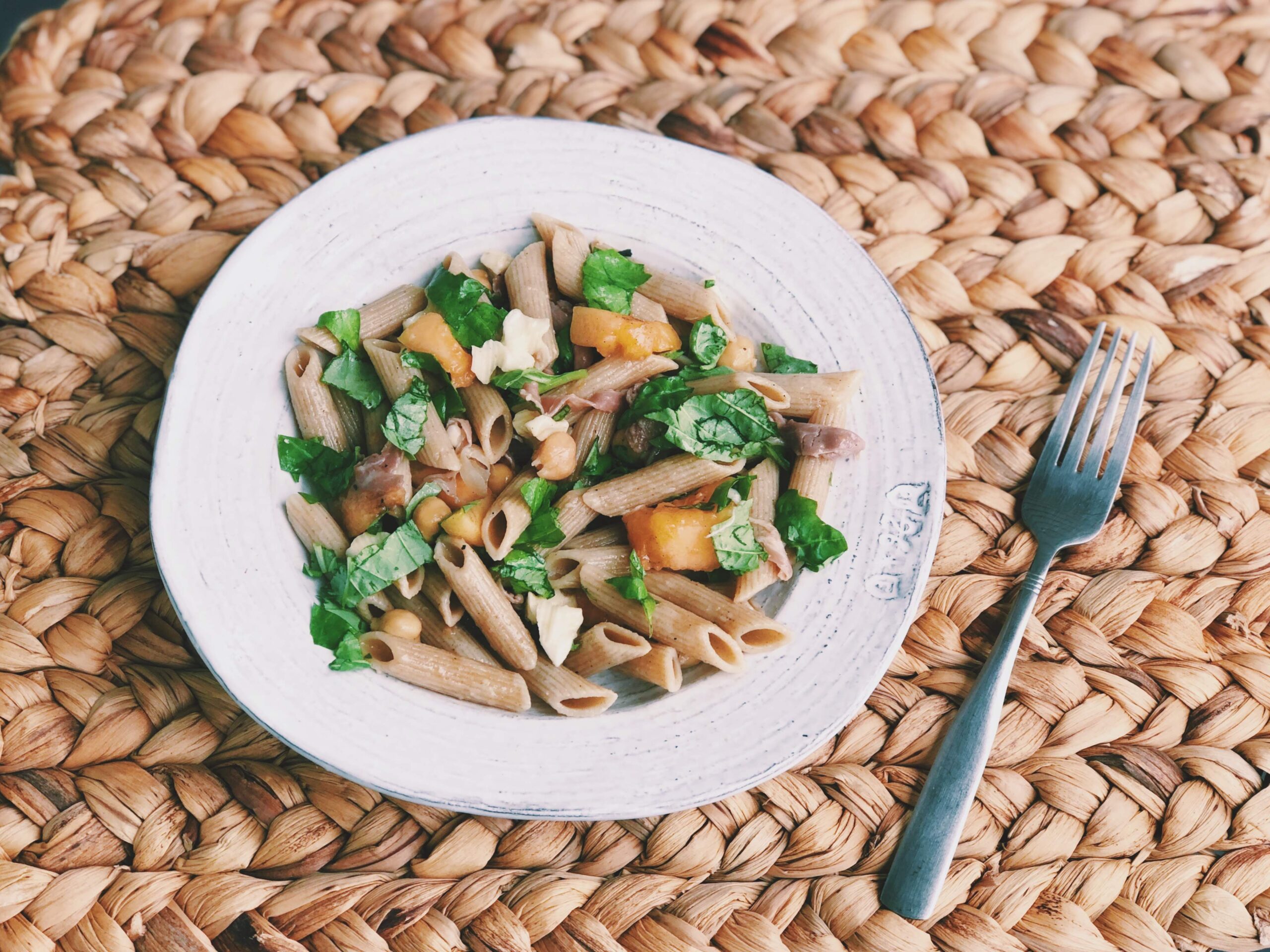Summer, and its magnificent bounty of fresh fruit, has arrived. This time of year is all about picnics, barbecues, and dining al fresco. Summer fruit common to the traditional Mediterranean Diet include: apricots, berries, cherries, dates, figs, grapes, melons, nectarines, olives, peaches, and tomatoes.
When it comes to summer fruit, you might immediately think of sugar-laden desserts. However, fruit in its whole form is most often the dessert of choice in the Mediterranean. Fruit is also versatile and can be incorporated into savory dishes. Take a page from the Italian kitchen and start a meal with a large antipasto platter (antipasto means “before the meal” in Italian). Instead of the often-seen antipasto platter of just cheese and prosciutto or jamon, serve an assortment of colorful, juicy summer fruit, such as figs, grapes, chunks of fresh cantaloupe, honeydew, and watermelon alongside charcuterie or cheese, olives, and toasted nuts. Another traditional Italian pairing is melon or cantaloupe wrapped with prosciutto. The saltiness of the prosciutto counterbalances the sweetness of ripe melon to yield a harmonious combination of tastes.
Add fruit (e.g., raspberries, figs) to your favorite vinaigrette recipe, or incorporate fresh fruit into your favorite summer salads. A refreshing bowl of chilled Spanish gazpacho should certainly be part of your summer eating. Prepare it traditionally with tomatoes, or take an untraditional approach by replacing the tomatoes with, for instance stone-fruit, watermelon, or berries.
Of course, summer is synonymous with grilling. Liven up your classic tomato, basil, mozzarella caprese salad with the addition of grilled fruit, such as apricots, peaches, or watermelon. The natural sugars present in the fruit will caramelize over the fire, enhancing their inherent sweetness, while picking up a bit of that pleasing, smoky-grill flavor. Avocados, technically a fruit, can also be grilled and subsequently stuffed with any number of fillings from vegetable to seafood salads.
If you’re looking for something a bit richer, utilize cherries or blackberries in a French gastrique. Don’t be intimidated by this fancy French term, as a gastrique is just a vinegar-based, sweet-and-sour sauce (agrodolce). The tart-sweet gastrique is magical when drizzled over meat, such as a seared duck breast or pork tenderloin.
Juicy summer fruit is the perfect addition to any number of sweet desserts, and by using in-season fruit at its peak of freshness, you may be able to dial down the amount of sugar in fruit fillings and other dessert recipes.
Fragole all’aceto balsamico (strawberries with balsamic vinegar) is a classic Italian combination, and it’s nothing more than strawberries macerated with a bit of sugar and balsamic vinegar. Splurging for a good-quality balsamic vinegar (i.e., aceto balsamico tradizionale di Modena) is definitely warranted for this dish.
For a boost of protein with your fruit, simply spoon some fresh fruit over a bowl of creamy, thick Greek yogurt. Perhaps, finish with a drizzle of raw honey. Alternatively, a simple fruit compote is lovely when spooned over yogurt. A compote is a fruit-based sauce made with pieces of fresh fruit and a sweetener (sugar, honey, or maple syrup), cooked briefly on the stovetop until thick and syrupy.
Free-form fruit tarts, galette (France) and crostata (Italy), are the perfect vehicles for mixed berries, peaches, and figs in baked desserts-with minimal effort. The great thing about galettes or crostatas is that they’re rustic in nature such that the “messier” it looks the better. You simply roll out the pastry dough, pile on your fruit, sprinkle with sugar, fold over the edges so they overlap a bit, and bake. You still get that flaky, crispy crust, but without that extra added step of rolling out a traditional pie dough and then blind baking. It’s simple yet impressive, and always a hit. The rich, nutty flavors of a whole grain crust beautifully complement any fruit filling!
Clafoutis is another easy yet memorable dessert of French origin. It’s traditionally made with black cherries arranged in a buttered ceramic dish and covered with a thick, egg-based, flan-like batter. When baked, clafoutis will puff up in the oven like a soufflé and brown along the edges with a creamy middle. It will deflate soon after it comes out of the oven, but no worries, it still tastes great when served warm and dusted with powdered sugar.
If you’re looking for a frozen fruit dessert to cool off with, granita is the perfect antidote. Granita, which hails from Sicily, features fresh fruit and water, blended and frozen until icy, flaked with a fork and frozen again until ice crystals form. Think of it as an adult snow-cone, albeit made with fresh fruit in lieu of artificial flavors and colorings.
Savor the sweetness of summer fruit! For more information and ideas, check out Plant-Based Mediterranean Desserts.
Want biweekly Med Diet information and recipes in your Inbox? Sign up for our Fresh Fridays newsletter by clicking the Subscribe button at the bottom of this page!
Join the Make Every Day Mediterranean Club Facebook group for additional information and support.









Leave a comment